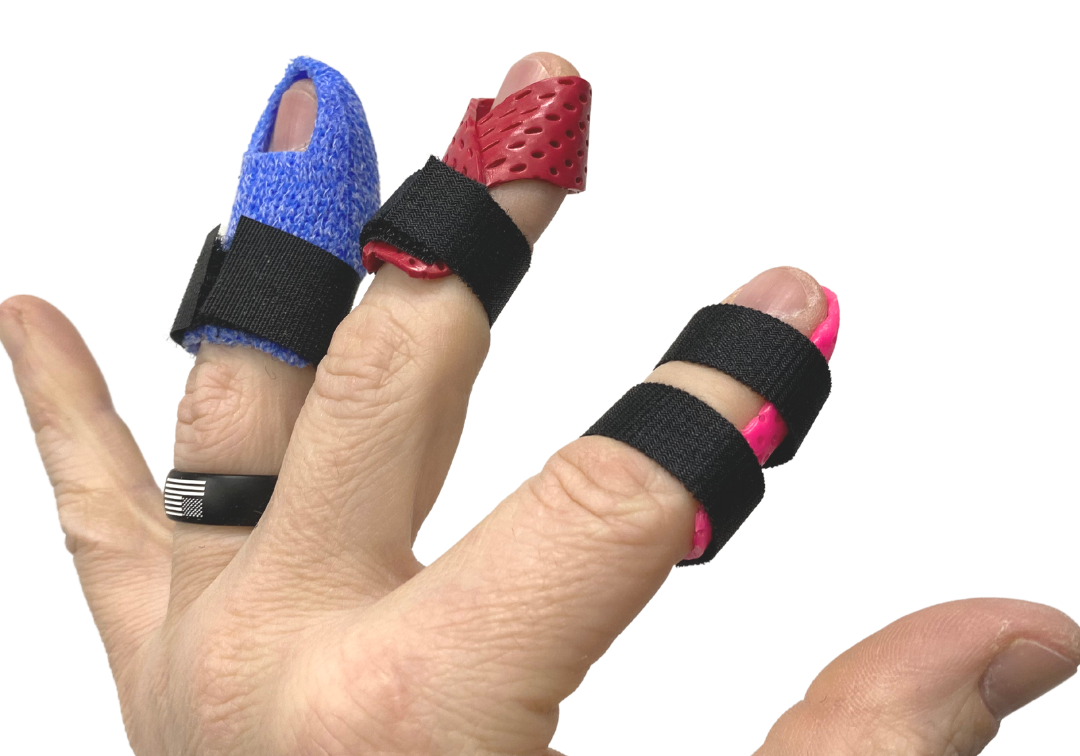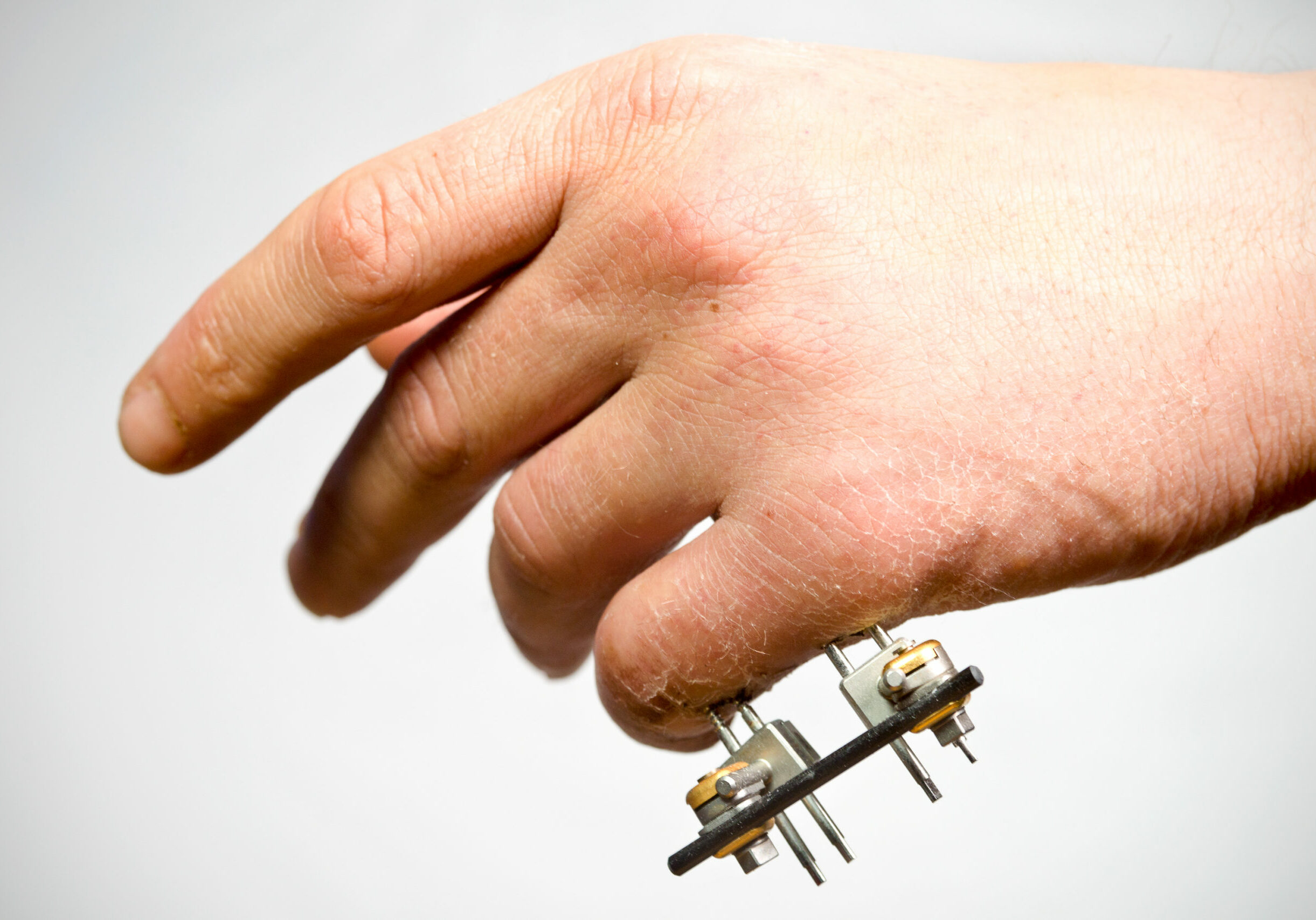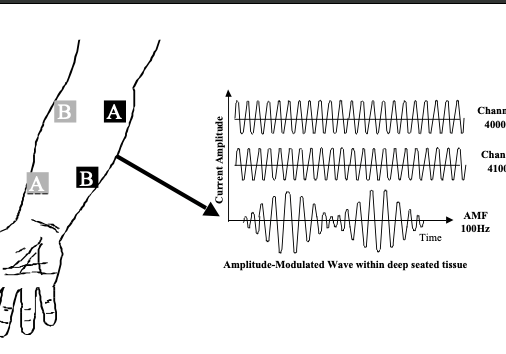By: Chelsea Gonzalez
Why do pediatric clients often not require as much hand therapy for soft tissue injuries when compared to adults?
The simple answer: Kids have very elastic soft tissue, which can return to its original shape and position after stretch. This elasticity is lost with time as collagen fibers expand and their internal matrix structures become disheveled.1
Why is this so? First let’s review some basics.
What is soft tissue? Soft tissue refers to the tissues surrounding organs and internal structures of the body. They include muscles, tendons, ligaments, fascia, nerves, elastin/collagen, vessels, lymphatics, and synovial structures.2
What do soft tissue injuries look like? Soft tissue injuries are most often classified as:
- Sprains/strains
- Overuse: tendonitis/bursitis
- Abrasions/contusions/bites
- Lacerations
- Crush injuries
How do soft tissue injuries heal?
All soft tissue injuries follow the same generic path of wound healing. The tissue healing timeline and strength is determined by the severity and complexity of the specific injury. Healing follows three main phases (stages of soft tissue healing): inflammatory, proliferative, and maturation/remodeling. Pediatrics and adults have similar inflammatory phases, where the body uses metabolic processes to clean and repair an injury site. During the proliferative phase, new collagen and cell growth is occurring. This initial structure is disorganized but functions as a bridge stitching soft tissue together. During the remodeling phase, the collagen matrix reassembles to decrease flaws in the tissue and promote mechanical function.3
Why does soft tissue heal differently for adults than for kids/teens? The strongest evidence why pediatric soft tissue heals better than their adult counterparts has more to do with compounding variables than age alone. Comorbidities, poor nutritional intake, altered hormonal responses, compromised immunity, decreased circulation, decreased skin integrity, degeneration of surrounding tissues, accumulated stresses and injury accumulation all tend to increase over time. Even though age by itself does not decrease healing per se, aging tends to coincide with these other variables that delay wound healing at all levels.4
What can hand therapists do when they have a pediatric patient with a soft tissue injury?
Pediatric soft tissue injuries are responsible for up to 40% of emergency medical visits every year. More than 50% of pediatric soft tissue injuries can be attributed to overuse from sports-related activity.3 It is important that thorough evaluation of pediatric patients include an in-depth social history including mechanism of injury, current activity level, prior activity level, sport/physical activity participation, and future sport/physical activity plans.
Plan of care: 1-2 times per week for 6-8 weeks.
The most common soft tissue injuries in pediatrics:
- Medial elbow avulsion fractures (“little league elbow”)
- “Jammed” fingers / Digit dislocations
- Sprained wrists/ “gymnast wrist”
- TFCC tear/compression
Little League Elbow image: https://www.pilotonline.com/sports/article_e9a25ffe-9246-5d31-9160-f491162517ce.html
Gymnast wrist image: https://pubs.rsna.org/doi/pdf/10.1148/rg.342135073
Areas of Intervention:
- Reduce inflammation/ manage swelling
- Ergonomic training/ Follow established return-to-sport protocols
- Custom orthotic fabrication for immobilization
- Anti-swan neck or anti-boutonniere deformity
- Wrist support
- Elbow immobilizer
- Dynamic orthotic fabrication to increase range of motion and gradual loading to joints
- Custom joint jack, PIP extension post finger jam/ ligament strain
- Progressive strengthening & endurance training beginning with isometrics
- Proprioception training
- Gradual weight-bearing
- Increase soft tissue extensibility and circulation
- Prevent contracture or hyperlaxity of joints
- Reconditioning and return to sport preparation
- Ergonomic and mechanic training
- Sport/ activity modifications
References
1 McLatchie, G.R. & Lennox, C.M.E. (1993). The soft tissues: Trauma and sports injuries. Butterworth-Heinemann.
2 Sports Medicine Australia. (n.d.). Soft tissue injuries. Retrieved from https://sma.org.au/resources-advice/injury-fact-sheets/soft-tissue-injuries/.
3 Hildebrand, K.A., Gallant-Behn, C.L., Kydd, A.S., & Hart, D.A. (2005). The basics of soft tissue healing and general factors that influence such healing. Sports Medicine Arthroscopic Review, 13, 136-144.
4 Thomas-Hess, C. (2011). Checklist for factors affecting wound healing. Advances in Skin & Wound Care, 24(4), p192. doi: 10.1097/01.ASW.0000396300.04173.ec
1 Comments
Leave a Comment
More To Read
Our Favorite Mallet Finger Splints
By: Josh MacDonald Fabricating a custom splint for a mallet finger injury is challenging. Fingers are tiny and they have small tolerances for errors and adjustments with custom splints. Making a splint for a mallet finger injury is probably the hardest type of finger splint for a therapist to make. Treatment recommendations vary, with some…
Read MoreMultiple Avenues of Pin Site Care in Hand Therapy
By: Megan Prather The prevalence of external fixation with pins in the upper extremity setting and the high rates of pin site infection make identifying a protocol for pin site care important for therapists. Across literature, there are many different pin site care protocols varying in frequency, solutions, materials, and manual cleaning. Despite many studies…
Read MoreIFC vs TENS: Electrical Stimulation for Pain and Swelling
In this article we’re looking at the difference between Inferential Current versus Transcutaneous Electric Nerve Stimulation (IFC vs TENS). Transcutaneous Electric Nerve Stimulation (TENS) TENS variations are often described by their technical characteristics: high frequency, low intensity (conventional TENS) or low frequency, high intensity (acupuncture-like TENS, AL-TENS) (Walsh et al., 2009). How TENS Addresses Pain:…
Read MoreSign-up to Get Updates Straight to Your Inbox!
Sign up with us and we will send you regular blog posts on everything hand therapy, notices every time we upload new videos and tutorials, along with handout, protocols, and other useful information.






Very nice description and explanation